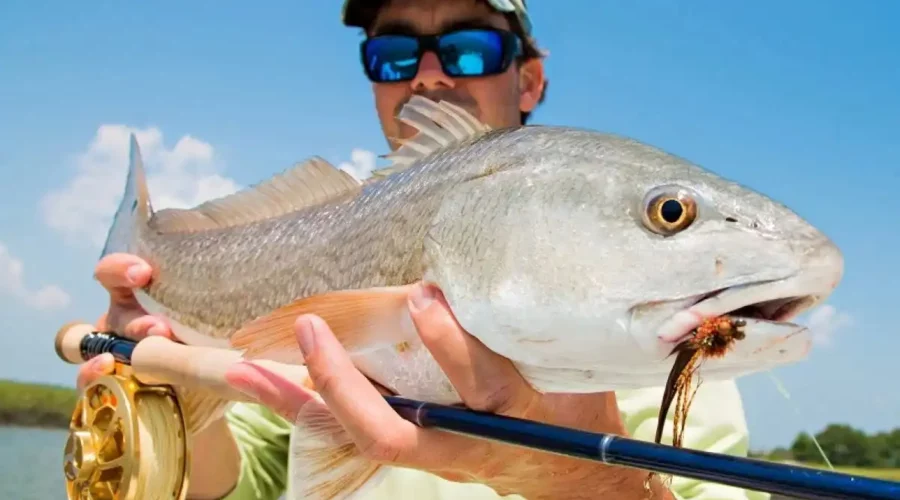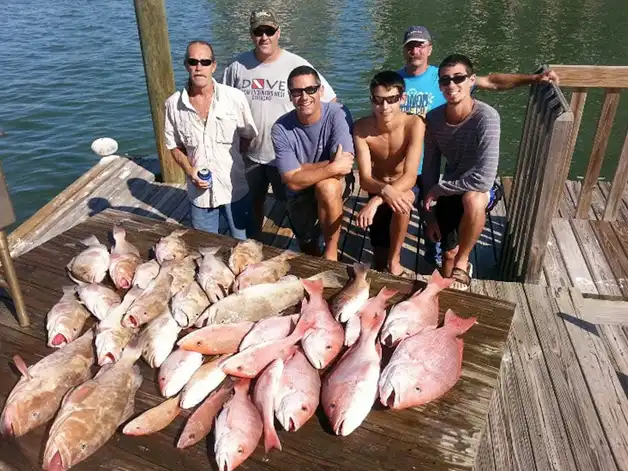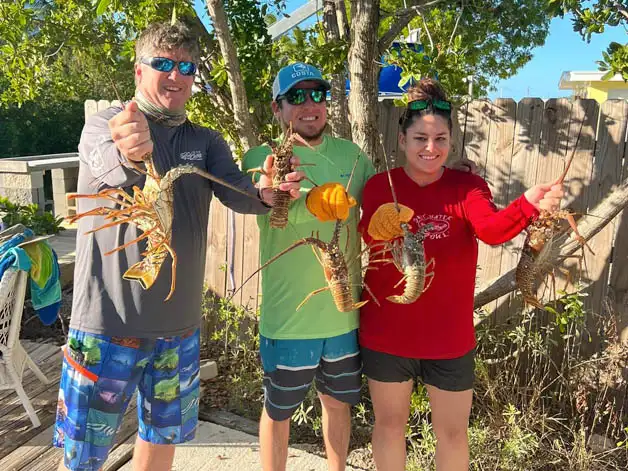The Best Ways To Catch Redfish In Mosquito Lagoon
What Is Mosquito Lagoon
Mosquito Lagoon is a large estuary located on the east coast of Florida, between the Indian River and Canaveral National Seashore. It covers approximately 40,000 acres of shallow waters and marshlands, making it one of the most productive fisheries in the region. The lagoon supports a diverse range of fish species and offers ample opportunities for recreational fishing. Mosquito Lagoon’s diverse habitats provide essential nursery grounds for many species of important gamefish, such as redfish, snook, sea trout, tarpon, and cobia. These waters are also home to a variety of aquatic plants that provide food and shelter to its inhabitants. With its rolling dunes along the shoreline and lush mangroves lining the banks, Mosquito Lagoon is truly an outdoor paradise for kayakers, paddleboarders, and anglers alike.
Description of Redfish
Redfish are a species of saltwater fish that inhabit the inshore waters of Florida, particularly in Mosquito Lagoon. They are part of the family of drums or croakers. Redfish have a deep reddish-copper color on their back, fading to silver on their sides and belly. They typically measure 18-26 inches in length and weigh up to 10 pounds. Their diet consists mainly of shrimp, crabs, and small fishes such as menhaden, anchovies, and silversides.
Redfish are one of the most sought-after game fish in Mosquito Lagoon, and anglers from around the world flock to the region for a chance to land this prized species. Fishing for redfish in the lagoon requires knowledge of the local habitat and careful consideration of several factors, including best times and locations, tackle, lures and baits, techniques, and regulations. With the proper preparation and techniques, any angler can have success fishing for redfish in Mosquito Lagoon.
Factors to Consider When Fishing for Redfish
One of the key factors to consider when fishing for redfish in Mosquito Lagoon is knowing when they are most active. Redfish are most active during warmer months when water temperatures range between 64-77 °F (18-25°C). Fishing early in the morning or late in the evening may provide better results than in the hot sun of late morning and afternoon. In addition, they tend to migrate towards shallower waters at night when it’s cooler and less exposed to sunlight, making them easier targets.
The tides also play an essential role when it comes to finding feeding redfish; incoming high tides typically draw schools of bait fish into shallow areas, which attracts predators such as redfish. Knowing these patterns will help anglers better time their trips and target the most productive spots.
Best Locations to Find Redfish
Stay Patient when Searching for Redfish
Searching for fish schools of redfish in Mosquito Lagoon can be challenging, but the rewards are worth it! The key to success is staying patient and taking your time to survey the area thoroughly.
Once you’ve identified a promising area, it’s important to approach slowly so as not to spook the fish before casting your lines. It’s also important to remember that redfish can be quite wary, so it’s often best not to cast directly into the school as they may be easily scared off. Instead, try casting around the edges of the school and then retrieve your line slowly while keeping an eye out for any bites or signs of activity.
By staying patient and taking their time, anglers can greatly increase their chances of finding and landing some great redfish in Mosquito Lagoon. With its diverse range of water conditions and abundance of aquatic wildlife, Mosquito Lagoon is the perfect destination for any angler looking to land a trophy-sized game fish.
Recommended Tackle, Lures, and Baits for Redfishing in the Lagoon
When it comes to tackle for fishing redfish in Mosquito Lagoon, light spinning rods or medium-weight casting rods paired with 8-10 lb test line are ideal choices depending on the size of your catch.
Lures can be a great way to attract redfish in Mosquito Lagoon and are often more effective than live bait. Spoons, jigs, and soft plastics are all popular choices for targeting redfish in the lagoon, as they mimic their natural prey, such as shrimp and small baitfish. Using lures with vibrating or noisy characteristics can also help draw redfish in and increase your chances of a successful catch.
The following are some of the top-rated and most-used lures:
- Rapala X-Rap: The Rapala X-Rap is a great choice when fishing for redfish in Mosquito Lagoon. This lure imitates the erratic motion of baitfish, making it attractive to redfish. The X-Rap has multiple color options and comes in a variety of sizes, from 3.5" up to 10" – perfect for targeting larger reds.
- Storm Wildeye Swim Shad: The Storm Wildeye Swim Shad is another top pick for redfish fishing in the lagoon. It features an innovative design that produces realistic swimming action, mimicking small baitfish that draw the attention of hungry predators like redfish. It also offers several color options and comes in sizes ranging from 2 inches up to 4 inches, making it ideal for targeting mid-size fish as well as larger ones.
- DOA Shrimp: The DOA Shrimp is one of the most popular lures used by anglers when fishing for redfish in Mosquito Lagoon because its lifelike profile and movements closely match that of natural shrimp – a favorite food source among many species, including reds. They come in various colors and sizes, so you can choose the right size and color depending on the type of water you are fishing in or the size of your target fish.
- MirrOlure She Pup: The MirrOlure She Pup is designed to look like a juvenile pinfish – one of the most common food sources among inshore predators like reds - making it an effective lure for catching larger specimens in Mosquito Lagoon. It features lifelike details such as scales, fins, and eyes which imitate natural prey and maximize effectiveness when targeting aggressive game fish like reds!
- Yo-Zuri Crystal Minnow: Yo-Zuri's Crystal Minnow is a great choice when fishing for aggressive game fish like reds found in shallow waters around mangrove shorelines and other areas with structures such as oyster beds or grass beds. Its lifelike profile, realistic swimming action, and wide range of colors make this lure highly effective at enticing.
Flies may seem like an unconventional choice when fishing for redfish; however, they can still be highly effective if tied with realistic color patterns and fished correctly. Fly patterns such as poppers, streamers, clouser minnows, or even crab imitations can be particularly effective when used around mangrove shorelines or deep channels where current is present, providing added motion that triggers strikes from opportunistic feeders like redfish.
For anglers looking to use live bait, shrimp, crabs, and pinfish are all great options, as they closely resemble the natural prey of redfish. It’s best to use small hooks and a lightweight to ensure that the bait stays at or near the bottom so as not to spook the fish.
Techniques to Catch Redfish in the Lagoon
Casting is one of the most popular techniques used by anglers fishing for reds in Mosquito Lagoon because you can cover a large area quickly while bouncing lures off bottom structures like oyster bars which triggers strikes from hungry predators nearby.
Another technique that works well is drift fishing which involves trolling along a set path with a slow-moving boat allowing you to cover more ground without having re-cast your lines over and over again as you move forward.
Still, fishing is another effective technique used by many anglers; this involves using sinkers attached directly to your line with baits suspended beneath them, attracting curious predators nearby who will take bites at anything resembling food swimming by.
Finally, fly fishing for redfish in Mosquito Lagoon is a popular and effective technique for anglers of all skill levels. The diverse range of water conditions in the lagoon makes it a great area to target both small and large reds with fly gear.
Benefits of Hiring a Local Fishing Charter
Regulations and Restrictions and Conservation Practices
Conservation practices for redfish and Mosquito Lagoon are critical in order to ensure its long-term sustainability. The Florida Fish and Wildlife Conservation Commission (FWC) has implemented several regulations aimed at protecting these resources, such as requiring a valid saltwater fishing license for recreational anglers over the age of 16, a two-fish per person bag limit with a minimum size requirement of 18 inches total length, and prohibiting the use of gillnets, hook-and-line gear with more than two hooks attached or multiple baits when targeting redfish.
In addition to these regulations, there are also several conservation practices that anglers can undertake to protect the health of Mosquito Lagoon. For example, anglers should practice catch-and-release techniques whenever possible to minimize mortality rates among individual fish. Additionally, when handling any aquatic wildlife, such as redfish, it’s important to wet your hands first before touching them. This helps reduce stress on the animal and will promote higher survival rates after release.
It’s also beneficial for anglers to educate themselves on appropriate bait selection; using live bait can help preserve natural food sources like insects and small crustaceans, which are essential components in sustaining Mosquito Lagoon’s delicate ecosystem balance. Finally, anglers should always remember to properly dispose of their used monofilament line or any other type of fishing debris since this can have dire effects on aquatic wildlife if left unchecked.
By following these simple conservation practices, anglers can work together with the FWC in order to preserve and protect Mosquito Lagoon while ensuring its long-term sustainability for generations to come.



